From cardboard to concrete: APTUM's former "Stalactite" prototype makes progress
By Bustler Editors|
Monday, Nov 2, 2015
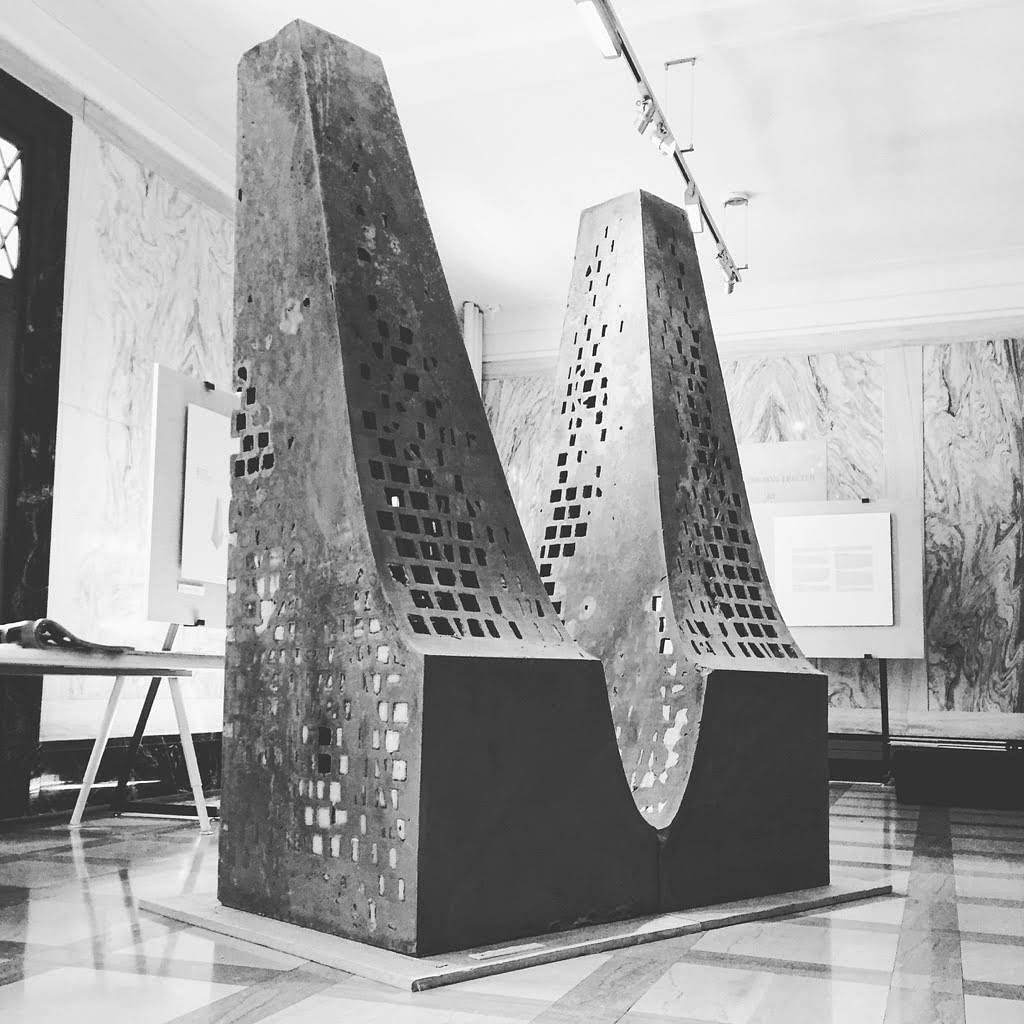
Related
Almost two years ago, APTUM Architecture shared their Stalactite pavilion, which was a submission to the Warming Huts 2014 competition. Although their entry didn't win, the APTUM team has been busy turning it into a reality. Now part of the THINNESS exhibition that APTUM organized, the first set of full-scale prototype modules were recently finished and then publicly showcased in the exhibition.
The pavilion was originally going to be made out of cardboard, but the material was switched to a light-weight, high-strength concrete mix — which APTUM developed with Cemex Concrete Research Group. From there, the project centralized on concrete design research. For starters, the concrete mix they used was able to reduce wall thickness to a mind-boggling width of 2 centimeters.
APTUM plans to have the 10’x10’x10’ pavilion fully built by spring 2016.
Read on to check out the project's progress.
Project description:
"CONCEPT: Like much of today’s culture, architecture is also driven by a fascination for the ‘thin’. Contemporary buildings reflect this most clearly in the design and construction of facades that are often reduced to high tech veneers that enclose, mundane steel or concrete structures. ‘Thinness’ is situated within this tension by hybridizing veneer and structure and creating a novel approach to being ‘thin’ through the use of modern high-performance, lightweight concrete. Using the development and construction of a transportable concrete pavilion, the project serves as a testing ground for research on the interdependencies between processes of digital fabrication, tectonic aggregation and architectural expression using high-density, lightweight concrete for thin, structural, concrete elements that aggregate into a veil-like structure."

"MATERIALITY: The research is driven by the interplay between formal, tectonic and material issues that lead to the development of a new concrete technology with smaller steel fibers that can handle the intricacy of the digital techniques used to comprise the surface pattern. While the design of the structure, as well as the design of the concrete mix, are based on digital tools, the formwork is a combination of state of the art digital fabrication techniques with water jet cut silicone and prehistoric techniques of ‘lost wax molds’ using silicone and wax formwork that is melted and reused after each pour.
The wax gives the flexibility to design complex forms with a limited set of formworks. The specially developed concrete mix, with an extremely dense (fine) matrix of aggregates, results in a high performance concrete with high strength, while the expanded glass aggregates provide the required lightweight density (1.4 kg/l in comparison to 2.4 kg/l for ‘standard’ concrete) to create much lighter concrete elements (approx. 200 lbs) that are easy to transport with 3-4 people. Even the size of the steel fibers needed to shrink in order to create even distribution of the mix within the compressed spaces of the formwork."
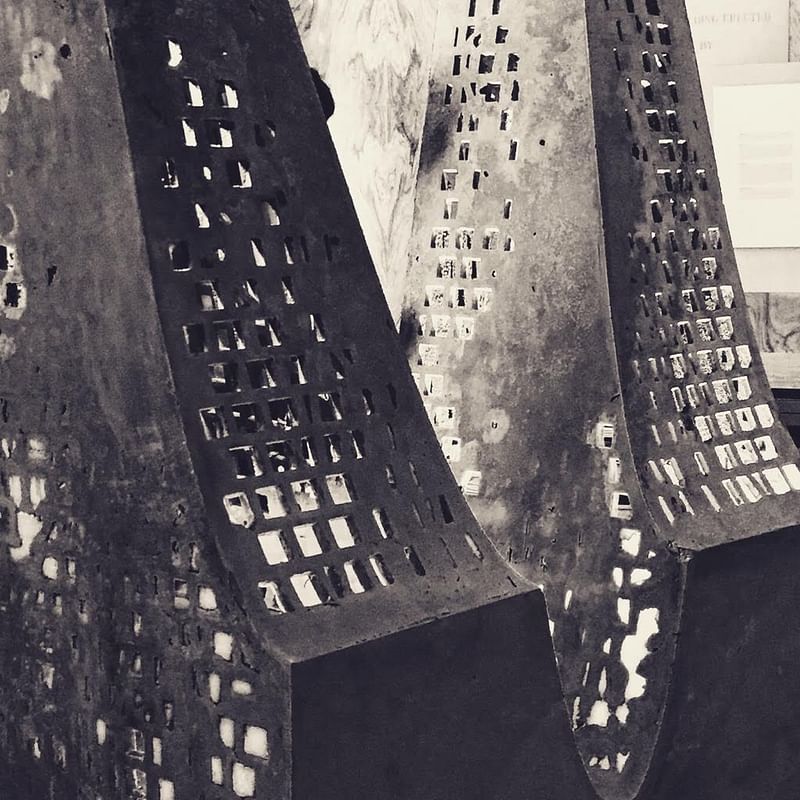
"FORM AND EXPRESSION: The project reevaluates common methods of pre-cast concrete pouring of structural elements as thin and spatial elements, rather than thick slabs. Our interests were not only in achieving a formally complex geometry but how a material - high performance lightweight concrete - has the potential to change architectural form and spatial relationships. The goal was to create a materially and formally sophisticated pavilion made of only 1/2 inch thick walls. Using a technique known as diffuse aggregation, we studied different patterns in grasshopper to comprise the surface pattern.
Meanwhile, the pattern creates a beautiful effect on the exterior and interior with light penetrating the surfaces, the dense pattern of voids also helped to considerably reduce the weight of the form. The ephemeral experience of the interior reflects both the depth and filigree quality of the elements. The four middle skylights bring direct light into the space while the other 12 elements provide diffused light as a thin veil or screen of concrete."

"STRUCTURAL CONSIDERATIONS: Together, with the structural engineer, we brought the forms of the pattern into a structural analysis program to test the limitations of the geometry and material. These tests helped resolve moments of stress on the forms and alter the veneer pattern to ensure little tension was placed on the stress points. With each element only weighing 200 lbs, this kind of lightness was intended so the concrete structure could be temporary and movable. Therefore, the structure of the elements is optimized for both its capacity to carry load in its final, upright position but also for the load conditions that occur during transport.
The displayed arc of the structural diagram on the facade informed where the pattern must become denser to ensure that the load distribution on the form was reduced during transportation. The rigidity of the individual elements is guaranteed by its ‘tube-like’ form and the high strength of the material (after 28 days 65 MPa/9500 psi) that creates strong and stiff corners. Due to the connection of the elements at the corners, the assembled elements form a compression ‘ring’ of arches when standing upright, in which, the four interior skylights are hung into and attached to the outer ring."
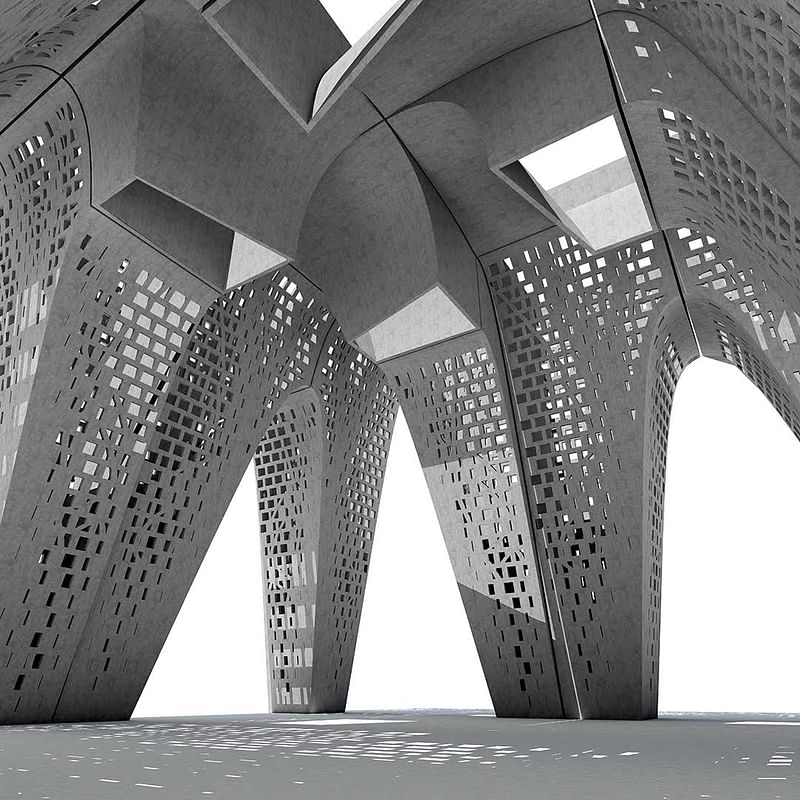
"FORMWORK: Due to the detailed quality of the structural veneer, the thinness of the walls, and the height of the elements, the challenge was in finding a formwork that would maintain the quality of the finish, the precise shape of all voids, as well as the diffused corners. The development of the formwork was a challenge because of the combination of a complex pattern and form, the extreme thinness, and the three-dimensionality of the elements. Through many trials and errors, the team resolved the construction of the formwork by coming up with a 3 part solution.
First, we made an inner and outer steel form. To make the pattern, water jet cut sheets of silicon were applied to the interior of the steel form to cast the inverse in wax. To ensure that the tall, steel forms could be removed without breaking the delicate pattern, wax was used for the interior formwork that could be melted away each time we poured. This enabled us to design a narrow, tall column that could be pulled out from the steel formwork once the wax was removed. A crucial aspect for the success of the formwork is its calibration of a complex concrete mix that creates a more fluid concrete for even distribution through the tight, woven pattern without leaving unwanted gaps or holes.
The veil of concrete elements fuse skin and structure to become a novel approach to a new, structural veneer. This research and development, at the scale of the pavilion, is an opportunity to rethink ‘thinness’ through a particular material lens in the hopes that it will shed light on other applications - from facades to structure to new spatial experiences."
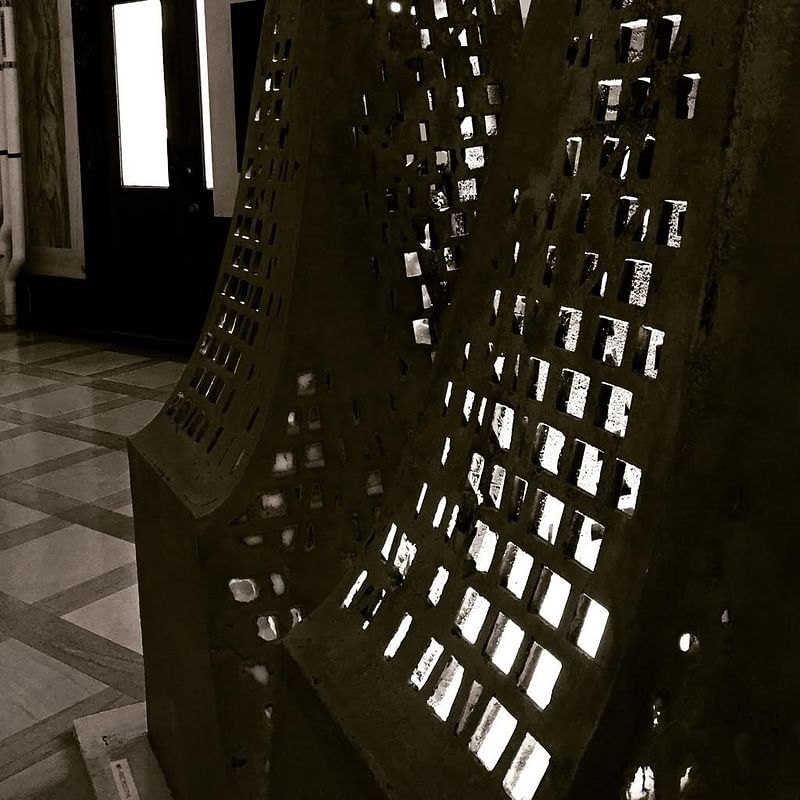
"THINNESS is a ‘work in progress’ exhibition showcasing concrete fabrication and design research that will result in a 10’x10’x10’ pavilion. The project is conducted in collaboration between Assistant Professors Julie Larsen + Roger Hubeli of the Syracuse University School of Architecture and Davide Zampini + Alexandre Guerini of the Cemex Concrete Research Group, in Biel, Switzerland. Additional project credit goes to Sean Morgan (architectural designer), assistant David Kaenel, and Jeremy Esser of CEMEX."

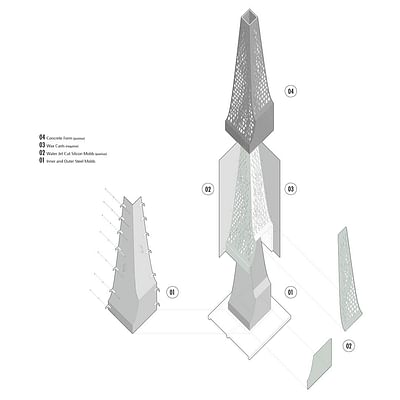
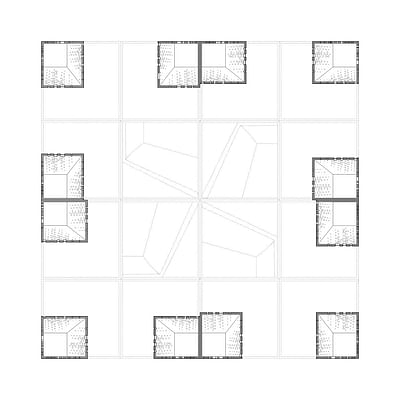

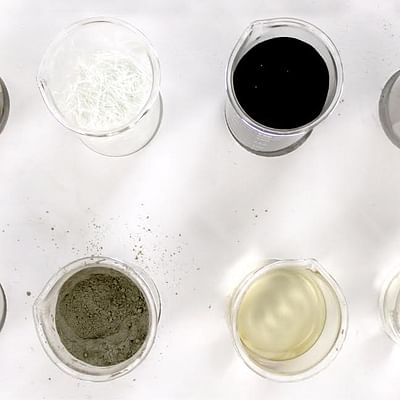

Share
0 Comments
Comment as :